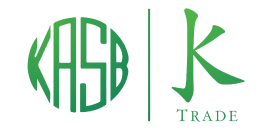Well no one is April fooled. After a mind-boggling plunge in the local and global markets, the stock market of Pakistan rose 16% in a single month to catch-up on the lost ground. The rebound was primarily led by government’s policy response to Covid 19. The perils of the virus have accompanied a permanent dent in oil prices which are net-positive for Pakistan’s economy. However, the initial spike seems to be maturing as we head into May. Let’s do a recap of April 2020;
What happened?
Lower inflation outlook: In January, the entire spectrum of criticism was on 14% YoY inflation number. However, since then the government has tried to manage the spikes in the constituents basket through reduction in taxes, imports, banning exports and strong arming the actions on hoarders. Therefore, the April’s CPI of 8.5% was reassuring for many. Moreover, the unprecedented fall in oil prices from $60sh to $30sh (today) – let alone the negative prices – have permanently altered the inflationary outlook creating room for monetary easing.
Construction Package: Amidst the Covid 19, government was able to negotiate an amnesty clause with IMF and announce a construction package. Several tax incentives were announced along with easing documentation requirements. The real cherry is the amnesty on the source of income until December 2020. There is genuine expectation of a spurt in the construction activity as black-money finds its way out. The stocks were jubilant.
External Debt: The government secured a quick $1.4bn of disbursement from the IMF with another $2bn expected from ADB and World Bank. Pakistan has also effectively lobbied with G-20 world leaders for a debt relief. The government has to pay $3bn till December 2020 and expected relief on those grounds could keep the currency stable and buy time to build FX reserves. April was a volatile month for Pak Rupee that plunged to Rs 170 with capital outflows only to recover ground to Rs 158 lately. Expect the pressure on currency to moderate in view of manageable Current Account post oil prices destruction.
IPP- Government Talks: A lot of media attention was given to the fact that IPPs have earned exorbitant amount of profits in last many years. A detailed report was leaked that prompted the IPPs to cry foul and affirm their solid grounds of legal protection. Despite meeting with the government, the cabinet decided to defer the matter for next two months. The government is initially focusing on rising capacity charges stemming from government owned GENCOs, RLNG and Nuclear plants. IPPs may show some flexibility in return of guaranteed cash flows but that’s a longer discussion.
Sugar Report: The government had initially set a deadline of 25th April to deal with the report prepared by agencies alleging that sugar industry earned abnormal profits illegally. However, that was contested as the defence of sugar players were not incorporated. The deadline was extended by 3 weeks. Talks of not-so-usual chemistry between Jahangir Tareen and Imran Khan also abound only with later chatters that the contact has resumed again.
SBP In Action: Surprisingly, the SBP has cut the Discount Rate by a cumulative 425 bps along with host of measures such as wage refinancing facility, reducing capital requirement for Banks, allowing principal deferment, relaxation regulations for provisioning requirement, Temporary Economic Refinance at 7% for expansion, new projects and BMR etc. Apparently, SBP has added the “growth” to its mandate along with inflation targeting. That’s comforting for the businesses, markets and government itself. Additionally, the SBP has announced the government is bearing 40% principal loss on loans also. To ensure Bank’s capital is protected, the Central Bank advised banks to defer their dividend payouts for a few quarters
Trade Numbers: The global markets are shut and thus in April, Exports plunged 54% YoY whereas the Imports fell 34% YoY. On monthly basis, the trade deficit widened 42%. There would be some respite from the remittances currently, to keep the annualised Current Account to targeted 2% of the GDP.
Tax Revenues: The revenues fell 17% YoY. This had to happen in a complete lockdown of the economy. In a normal scenario, tax revenues were rising 16-17% YoY. The numbers do not represent a doomsday scenario but under the IMF fiscal reforms, the pace needs to go up as the economy adjusts to new normal. The government has jacked up Petroleum levy to create buffers but they may not be enough to offset the decline in a contracting economy. The IMF naturally expected increasing tax revenues for Fiscal Year 2021 and the drive to documentation needs to continue at a lesser pace. The non-paying sector needs to be part of the formal economy. The woes would intensify.
Oil Prices: The international oil prices are in a declining phase as the mobility dries up. The month involved aggressive diplomacy from the US, Saudi Arab and Russia to agree for supply cuts. Collectively, ~15mn barrels of cut have been announced. That may be enough by the town lockdown eases. Pakistan imports $14-15bn worth of energy every year, thus conservatively $5-6bn per year of annual savings would reduce considerable strain on external account and provide much needed impetus to the economy and enable, monetary easing for medium term.
Other notable key events included government giving waivers on electricity bills for commercial users consuming less than 5kw and industrial ones using less than 70kw load. The RLNG prices also declined from $11.3/mmbtu to $9.5/mmbtu in April ( $7.7/mmbtu for May). The government has also urged China to relax terms of some power projects to elongate the debt repayment period and reduce the spread over LIBOR charged on the projects. The silence sounds like a yes. Lastly, the cement players had temporarily increased the prices in North (only to reversed as we publish after meeting with Hammad Azhar). The political climate remained slightly heated as barbs were exchanged on 18th Amendment.
Watch out for:
-Debt Relief: Any news on this front could be well received by the markets as the government buys time to focus on the structural reforms and improve the FX reserves. Pakistan has lobbied hard and the case is stronger for many developing nations.
– India-Pak Tension: Border skirmishes have increased as India passes laws to amend the demographic fact of Jammu and Kashmir whereas Pakistan is mulling elections in Gilgit-Baltistan causing uproar in India. More statements came from India’s ministers of presence of launch pads in Pakistan after a Kashmiri Riyaz Naikoo was killed by Indian forces. Indian forces lost a Colonel, Major and few soldiers as worst episode in many months.
-The MSCI Review of Pakistan on 12th May (most likely a hold because of Covid’s extraordinary circumstances despite Pakistan not meeting quantitative criteria)
-Budget discussions whereby the government will be under extreme pressure to increase tax revenues in a contracting Covid-ridden economy. The budget is scheduled for 5th June and expect some increase in import custom duties and reduction in indirect taxation on various sectors. The documentation would continue nonetheless with some cherries. Note: the IMF’s $450mn are expected after the budget also. Expect less cherries but of course, a high fiscal deficit.
-Expectations of another discount rate cut are abound. I expect no change or a maximum 50 bps cut contrary to market expectations of another 100 bps of cut. The run on currency would undo the benefits of falling interest rates from current levels. Government has to walk on a tight rope as it grapples with plunging export receipts for a few months.
-Increased risk taking post monetary easing as Mutual Funds, Insurance company and Banks mull increasing allocation to Equity Capital Markets gradually after a sharp decline in the fixed income yields. The fixed income yields are not showing negative real returns. That’s tactical to give government firepower to provide relief in Covid days. However, falling oil prices do provide impetus to the economy marginally only to be over shadowed by falling purchasing power owing to massive Urban employment.
Thus, the month of May may not be able to garner a lot of volatility in the markets as investors remain on the sidelines owing to Eid holidays, shorter working hours in Ramzan, budget anxiety, potential spike in Covid cases and Indo-Pak tensions. The market is overall poised for a gradual tick-shaped recovery as the worst seems behind us. Mainstream sectors may not provide Alpha returns, stock picking would be the key.

